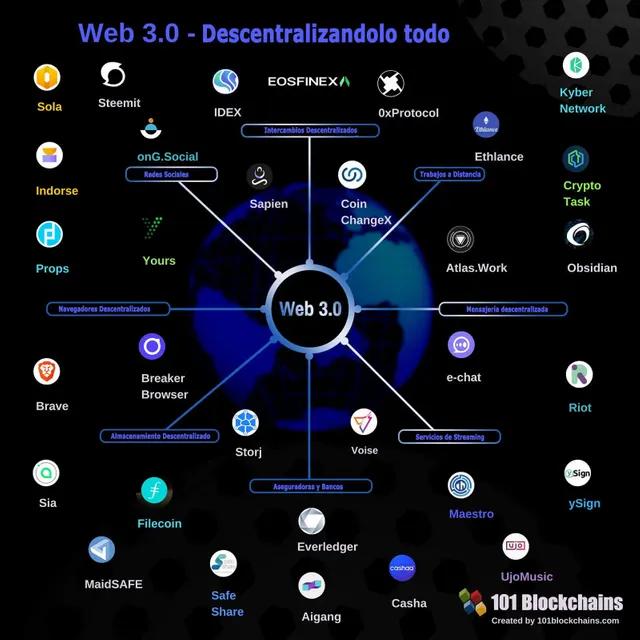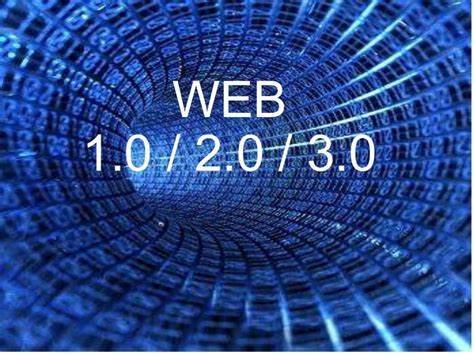The Future of Web 3.0: Trends and Developments to Watch Out For Secondary Title: From DeFi to DAOs: A Look into the Decentralized Future of the Internet

Web 3.0, also known as the decentralized web, is an emerging paradigm shift in the way the internet is structured, accessed, and used. While the current web, known as Web 2.0, relies on centralized servers and services, Web 3.0 leverages decentralized networks and technologies like blockchain to create a more open, secure, and trustless internet.
In the coming years, Web 3.0 is set to transform various industries and sectors, from finance and healthcare to entertainment and education. Here are some of the key developments to expect in the Web 3.0 ecosystem:
1- Increased Adoption of Blockchain-based Technologies
Blockchain is a core technology of Web 3.0, enabling decentralized networks, smart contracts, and crypto assets. In the coming years, we can expect to see more adoption of blockchain-based technologies across various industries. For instance, the use of blockchain for supply chain management, digital identity, and voting systems is already gaining traction, and this trend is likely to continue.
Moreover, the development of scalable and interoperable blockchain networks like Polkadot, Cosmos, and Ethereum 2.0 will facilitate the integration of different blockchain-based solutions and enable cross-chain communication.
2- Decentralized Finance (DeFi) Goes Mainstream
Decentralized finance, or DeFi, is a new financial system built on blockchain that enables peer-to-peer transactions without intermediaries. In the past year, the DeFi ecosystem has exploded, with total value locked (TVL) in DeFi protocols surpassing $100 billion.
In the coming years, DeFi is expected to go mainstream as more people realize the benefits of decentralized finance, such as lower fees, higher returns, and greater control over their assets. Moreover, the integration of DeFi with traditional finance through regulated DeFi platforms and decentralized exchanges (DEXs) will further accelerate the adoption of this new financial system.
3- The Rise of Decentralized Autonomous Organizations (DAOs)
Decentralized autonomous organizations, or DAOs, are blockchain-based organizations that operate without a central authority or management. Instead, they are governed by a set of rules encoded in smart contracts, and their members can vote on proposals and make decisions collectively.
DAOs have already gained traction in the crypto space, with projects like MakerDAO, Uniswap, and Aave being run as DAOs. In the coming years, we can expect to see more adoption of DAOs as they offer a more transparent, democratic, and decentralized way of organizing people and resources.
4- Web 3.0 Enables New Forms of Digital Content and Ownership
Web 3.0 is set to transform the way we create, distribute, and consume digital content. With blockchain-based technologies like NFTs (non-fungible tokens), creators can now tokenize their digital assets and sell them as unique, provably scarce items. This has enabled new forms of digital content ownership and monetization, from art and music to virtual real estate and gaming items.
Moreover, Web 3.0 is also enabling new forms of decentralized social media and content platforms that put users in control of their data and enable direct monetization through microtransactions and token rewards.
5- The Emergence of Web 3.0-enabled Metaverses
Metaverse is a term used to describe a virtual world that is fully immersive, persistent, and interactive. In the coming years, we can expect to see the emergence of Web 3.0-enabled metaverses that leverage blockchain, virtual reality, and artificial intelligence to create new forms of social interaction, commerce, and entertainment.
Metaverse platforms like Decentraland, Somnium Space, and Sandbox are already attracting millions of users and investors, and this trend is likely to continue as more people seek new ways to

.jfif)